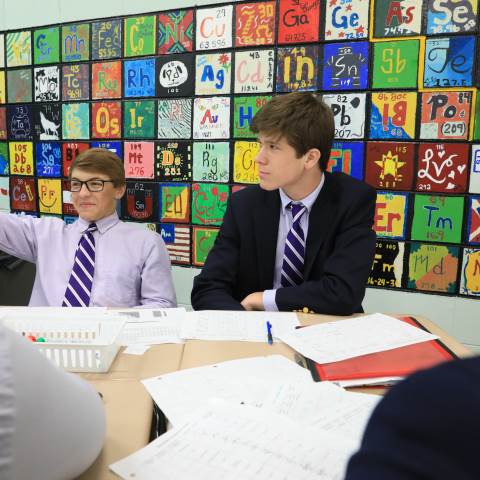

This is the fifth and final post in a series of blogs focusing on how to use brain research to develop lesson plans and to engage students. The fifth strategy has to do with collaboration among students and the importance of teachers understanding a student's entry levels.
For my final blog entry this year, I would like to focus on two areas of teaching that can make a positive impact on student engagement and success in the classroom. The first is the use of collaborative partner or group work. The ability to successfully collaborate with others is a skill that has become more and more important in school and beyond. Employers often note that those workers who are able to communicate and work with others in multiple situations and under varying conditions are some of the most valuable employees they have.
The ability to share one’s ideas and to genuinely listen to others’ ideas are skills which will be used throughout a student’s life. Teachers can strategically assign students to partners or groups in order to accomplish multiple goals. A strong student can help support a struggling student while a student who is a reluctant participator can be encouraged to share their ideas when working with students who are skilled at listening and including others. Learning to communicate effectively with one’s peers often helps students develop confidence which can be generalized into other parts of their lives.
Another valuable tool that a teacher can employ to increase student engagement is the knowledge of their students’ entry levels. Many teachers use preplacement tests or other instruments to learn more about the entry levels of their students. Some teachers ask their students to list 5 things they already know about a topic prior to introducing it in class.
Dr. Sarah Armstrong used an A to Z form in which students tried to think of things pertaining to the next topic that start with each letter in the alphabet. After trying for several minutes, she would have them work in pairs, then in small groups to try to complete the entire chart.
Knowing reading levels can be very helpful in planning lessons as well. For example, a class of 20 students might include children reading on 4 or 5 distinct levels. Asking a student who is reading on a lower level to complete assignments above their reading levels will frequently result in frustration and disengagement.
Most any topic can be taught using materials geared toward varying reading levels. If a teacher spends some time researching both their students’ reading levels as well as materials available to match those levels, they can see far more participation and engagement from all students.